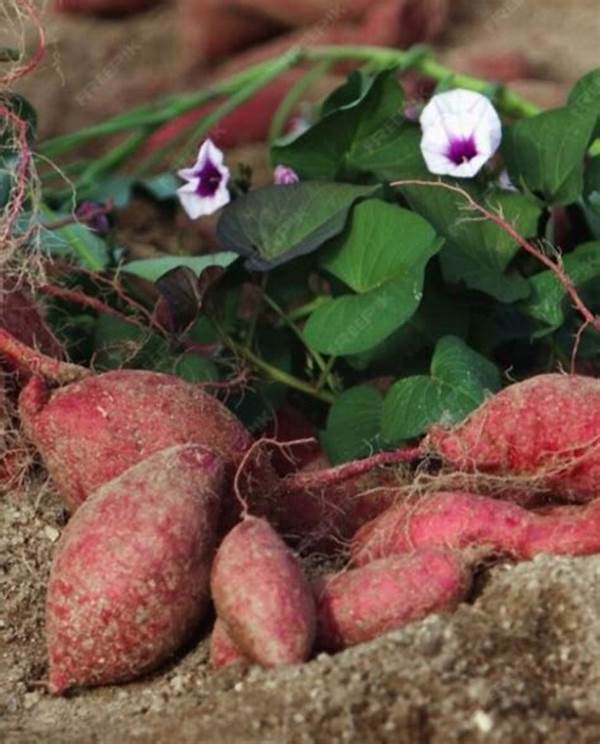In recent years, the agricultural sector has faced significant challenges due to the increasing prevalence and intensity of droughts caused by climate change. These adverse conditions have necessitated the development of drought-resistant crop varieties that are capable of sustaining productivity under water-scarce conditions. This process involves extensive research and collaboration among scientists, agronomists, and farmers to ensure the resilience and food security of future generations. By incorporating advanced techniques such as genetic engineering and traditional breeding methods, experts strive to address the pressing need for sustainable agriculture.
Read Now : Intellectual Property Rights In Research
The Importance of Drought-resistant Crop Varieties
The development of drought-resistant crop varieties is paramount for ensuring food security in regions prone to water scarcity. These varieties are specifically engineered or bred to thrive in conditions with limited water availability, requiring less irrigation and exhibiting higher resistance to drought-induced stress. As such, they play a crucial role in sustaining agricultural productivity, especially in marginalized communities reliant on subsistence farming. This need for resilient agricultural practices underscores the significance of continued investment in research and development within this sphere, illustrating the interconnectedness of food security and climate adaptability.
Key Aspects of Drought-resistant Crop Varieties
1. Genetic Modification: Modern techniques involve altering the genetic makeup of crops to enhance their drought tolerance.
2. Conventional Breeding: Traditional breeding methods are employed to cultivate crops naturally resistant to drought conditions.
3. Water Efficiency: Drought-resistant crop varieties are designed to use water more efficiently.
4. Improved Yield: These varieties maintain yield under drought stress, avoiding drastic reductions in production.
5. Soil Suitability: Such crops are adaptable to various soil types, enhancing their versatility and utility.
Strategies in Drought-resistant Crop Varieties Development
Drought-resistant crop varieties development encompasses various strategies aimed at producing seeds capable of thriving under water-deficient conditions. One crucial approach is the integration of modern biotechnological tools, such as CRISPR gene-editing, which allows for the precise alteration of plant genomes. By identifying and enhancing specific traits responsible for water-use efficiency or stress tolerance, scientists can significantly advance this development. Another strategy involves traditional breeding techniques, where naturally resilient crop strains are carefully selected and crossbred to amplify drought-resistant characteristics.
Moreover, agronomic practices that optimize water use complement these biological approaches. Techniques such as mulching, precise irrigation management, and soil moisture retention methods are vital in maximizing the effectiveness of drought-resistant crops. Together, these approaches contribute to robust drought-resistant crop varieties development, ensuring not only persistence in harsh climates but also a global commitment to sustainable agriculture. As such, investment in these fields is crucial, particularly in light of projected climatic adversities.
Scientific Innovations in Drought-resistant Cultivation
Scientific innovations form the backbone of effective drought-resistant crop varieties development. Through advanced research, scientists have identified genetic markers associated with drought tolerance, accelerating the breeding processes. Utilizing marker-assisted selection, breeders can expedite the creation of resilient crop varieties poised for drought-afflicted regions. This approach not only speeds up traditional breeding timelines but also increases the precision with which drought-resistant traits are imparted.
Read Now : “tech-driven R&d Methodologies”
Furthermore, bioinformatics tools and modeling systems play pivotal roles in simulating environmental stress conditions. By forecasting the impacts of prolonged drought episodes on crop yields, researchers tailor breeding programs to meet specific regional requirements. These innovations highlight the synergy of technology and agriculture in the ongoing pursuit of drought-resistant crop varieties development, paving the way for climate-resilient agriculture capable of sustaining global food supplies.
Challenges Faced in Drought-resistant Crop Varieties Development
The path of drought-resistant crop varieties development is fraught with numerous challenges. Climatic variability presents a persistent obstacle, as crop responses to drought conditions can vary significantly across different ecosystems. Understanding and addressing these unique environmental responses is paramount to achieving effective cultivation strategies. Additionally, socio-economic factors such as resource allocation and accessibility of technological advancements pose challenges in the widespread adoption of drought-resistant crops.
Investment in research and development is often limited, hindering the progress of innovative techniques and solutions. Collaborative efforts between governments, research institutions, and local farming communities are crucial to overcoming these barriers. With proactive measures and sustained commitment, the drought-resistant crop varieties development can surmount these challenges and unlock new potential in safeguarding global agriculture. The subsequent paragraphs examine the necessity of fostering partnerships and continual advancement in this field.
Future Directions in Drought-resistant Crop Development
Looking ahead, the future of drought-resistant crop varieties development lies in continued innovation and collaboration. Public-private partnerships will play an essential role in advancing research efforts and ensuring the dissemination of knowledge and technologies to resource-limited farmers worldwide. By fostering these relationships, stakeholders can leverage diverse expertise and share resources to achieve substantial breakthroughs in drought resistance.
Furthermore, educational initiatives aimed at equipping farmers with the knowledge to implement drought-resistant practices will drive community-level adoption. As climate change predictions indicate an increase in drought frequency and severity, the emphasis on drought-resistant crop varieties development is more urgent than ever. Through synergy and shared commitment, the agricultural sector can fortify global food systems against the looming threats of climate variability and water scarcity.
Synthesis of Drought-resistant Crop Varieties Development
In summary, the focus on drought-resistant crop varieties development is paramount in addressing the challenges posed by global climate change. The integration of scientific advancements with traditional agricultural practices has unlocked significant potential in developing crops that withstand harsh environmental conditions. The myriad benefits include enhanced water-use efficiency, sustainable yields, and adaptability to diverse soil types, all contributing to resilient food systems.
Continuous investment in research and collaborative efforts across the agricultural landscape are vital for propelling drought-resistant crop varieties development forward. Tailoring these advances to meet regional needs will ensure their efficacy and maximize their impact on food security. The shared global responsibility to mitigate the effects of climate change on agriculture underscores the importance of this development, fostering hope for a more sustainable and resilient future.
